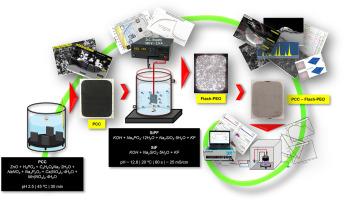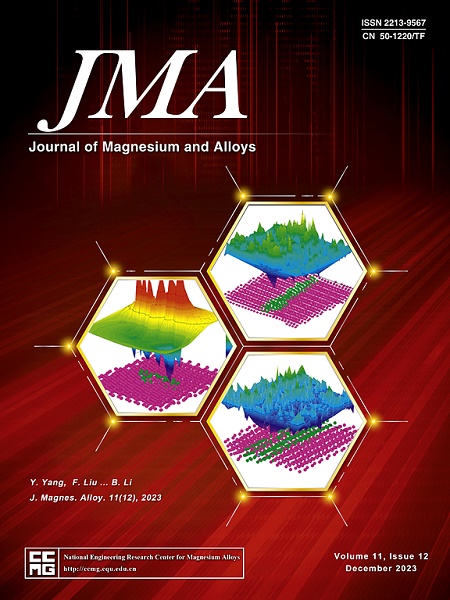Flash-PEO of magnesium: Phosphate precursor driven functionalization
IF 15.8
1区 材料科学
Q1 METALLURGY & METALLURGICAL ENGINEERING
引用次数: 0
Abstract
In this study, a phosphate-based conversion coating (PCC) was applied as a precursor before forming silicate-fluoride (SiF) and silicate-phosphate-fluoride (SiPF) based flash-plasma electrolytic oxidation (Flash-PEO) coatings on AZ31B magnesium alloy. The main novelty is the successful incorporation of calcium, zinc, manganese and phosphate species into the Flash-PEO coatings via a precursor layer rather than using the electrolyte. The precursor also led to longer lasting and more intense discharges during the PEO process, resulting in increased pore size. Corrosion studies revealed similar short-term performance for all coatings, with impedance modulus at low frequencies above 107 Ωcm2, and slightly better performance for the SiPF-based coating. Nonetheless, the enlarged pores in the PEO coatings functionalized with the PCC precursor compromised the effectiveness of self-healing mechanisms by creating diffusion pathways for corrosive species, leading to earlier failure. These phenomena were effectively monitored by recording the open circuit potential during immersion in 0.5 wt.% NaCl solution. In summary, this study demonstrates that conversion coatings are a viable option for the functionalization of PEO coatings on magnesium alloys, as they allow for the incorporation of cationic and other species. However, it is crucial to maintain a small pore size to facilitate effective blockage through self-healing mechanisms.


求助全文
约1分钟内获得全文
求助全文
来源期刊

Journal of Magnesium and Alloys
Engineering-Mechanics of Materials
CiteScore
20.20
自引率
14.80%
发文量
52
审稿时长
59 days
期刊介绍:
The Journal of Magnesium and Alloys serves as a global platform for both theoretical and experimental studies in magnesium science and engineering. It welcomes submissions investigating various scientific and engineering factors impacting the metallurgy, processing, microstructure, properties, and applications of magnesium and alloys. The journal covers all aspects of magnesium and alloy research, including raw materials, alloy casting, extrusion and deformation, corrosion and surface treatment, joining and machining, simulation and modeling, microstructure evolution and mechanical properties, new alloy development, magnesium-based composites, bio-materials and energy materials, applications, and recycling.
 求助内容:
求助内容: 应助结果提醒方式:
应助结果提醒方式:


